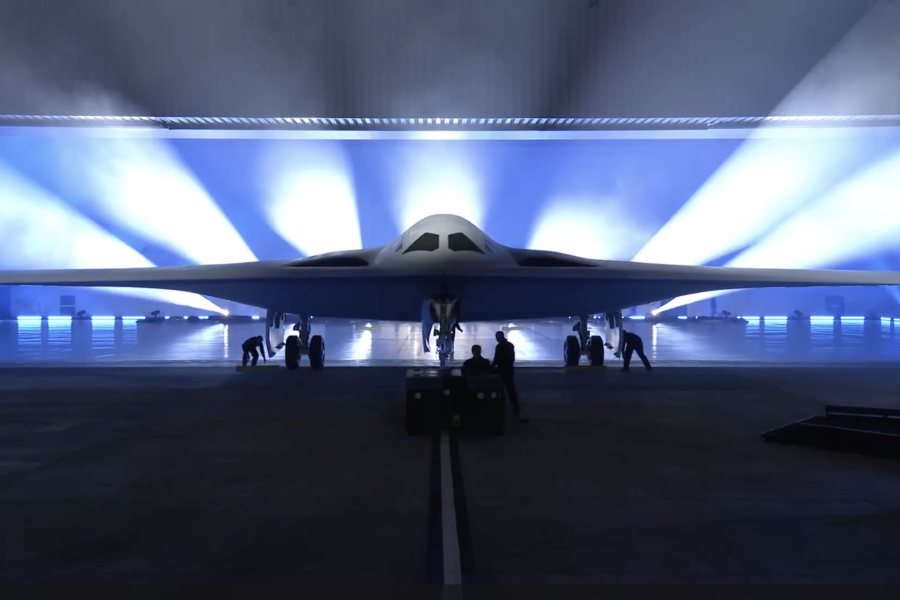The B-21 Raider is a developmental, penetrating strike bomber planned to deliver both conventional and nuclear munitions.
The low-observable flying-wing design was christened “Raider” in honor of the WWII Doolittle Raiders, who mounted the surprise attack on Japan in April 1942.
Though similar in shape to the B-2, the B-21 features more deeply recessed engine inlets, dual-wheel main-landing gear, unique trapezoidal windscreens, and more advanced low-observable designs.
The Air Force awarded Northrop Grumman the Long-Range Strike Bomber contract in 2015, aimed at developing an affordable, next-generation stealth bomber utilizing modern systems and materials. The type is the Air Force’s first new bomber design since the B-2 Spirit, introduced in 1988, and is planned to become the mainstay of the strategic fleet alongside the modernized B-52J.
USAF is developing the B-21 as part of a “family of systems” encompassing complementary ISR, C2, and electronic warfare platforms and capabilities designed for survivability in high-end threat environments. Northrop Grumman is using digital design techniques to quickly incorporate changes and speed fielding, as well as an open-system architecture to easily enable future upgrades and modernization.
Notional nuclear armament includes the planned Long-Range Standoff (LRSO) missile and B61-12 guided free-fall weapons, as well as a range of advanced conventional weapons.
AFGSC plans to acquire a fleet of at least 100 B-21s which would be delivered starting in the mid-2020s. Concurrent development and low-rate initial production aim to accelerate fielding, starting with the first lot in FY23.
LRIP will include 21 aircraft over five lots, followed by full-rate production as soon as FY25. At least six airframes are in production at Northrop Grumman’s Palmdale, Calif., facility where the initial aircraft was unveiled in a public ceremony Dec. 2, 2022.
The first aircraft is completing ground testing and taxi trials at Palmdale, before making the type’s first flight. USAF slipped the first-flight timeline to ensure design maturity but still plans to deliver the aircraft to Edwards in 2023, to continue development and conduct flight-testing.
Initial operational aircraft will be delivered to AFGSC’s formal training and operational units at Ellsworth, followed by Whiteman and Dyess
Contractor: Northrop Grumman (aircraft); Pratt & Whitney (engines); Collins Aerospace; GKN Aerospace; BAE Systems; Spirit Aerosystems; Janicki Industries (advanced structures).
Unveiled: Dec. 2, 2022
First Flight: Nov. 10, 2023 (unofficial)
Production: ≥100 (projected)
Inventory: 1
Operator: AFMC. Planned: AFGSC
Aircraft Location: Air Force Plant 42, Calif., Edwards AFB, Calif. (planned testing), Ellsworth AFB, N.D., Whiteman AFB, Mo., Dyess Air Force Base, Texas (all planned)
Dimensions: Span 150 ft. (estimated, approximate), Height 18 ft. (estimated, approximate)
Weight: Max T-O unknown.
Powerplant: Pratt & Whitney turbofans.
Performance: Speed high-subsonic (estimated), range intercontinental.
Armament: Nuclear and conventional (planned)
Accommodation: Crewed/Optionally Uncrewed.
